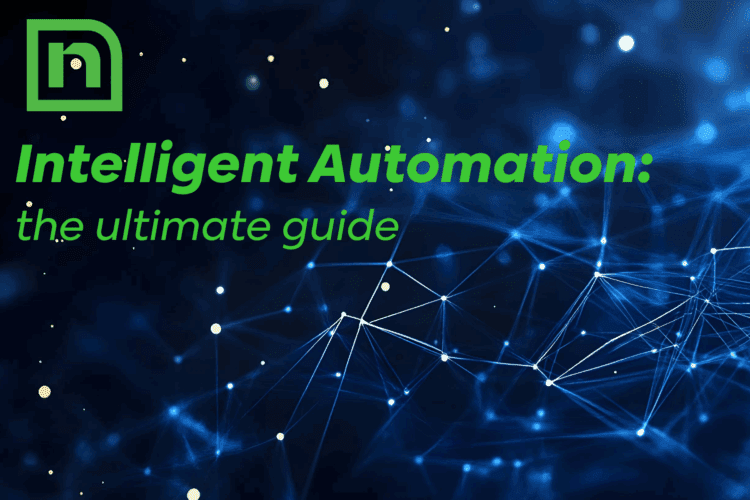If improving your processes is one of your top goals, you need to look at process mining. At this point, it’s the top technology for process optimization, with recent AIMultiple research finding that these tools can enable:
- Process improvement by 23%
- Automation by 25%
- Digital transformation by 25%
Let’s look at the top 10 process mining use cases to better understand how process mining can be used to improve your processes, based on the experience of the many organizations who have already started their process mining journey.
Top 10 Process Mining Use Cases
1. Process KPI Reporting
To make data driven decisions, management teams need to be able to easily access realistic, strategic KPIs. Still, this process can be very tedious, so it’s become popular to outsource this process. Unfortunately, that naturally means it’ll happen less often and the potential for digging deep into the data’s context and details is limited.
That’s why process mining has been such a game-changer for organizations’ KPI reporting. Process mining technology lets you build thousands of KPIs by default so you no longer need to spend time waiting for individual KPIs to be built. It also saves significant time because predictive capabilities can notify you of the most important KPIs before any issues can happen.
2. Conformance Validation
Process mining can also help you ensure that your current processes align with specified standards using process mining-aided conformance checks. For example, purchasing decisions may require different approvals depending on the ticket size and the nature of the item purchased.
Plus, process mining can also analyze nonconforming cases, reasons for deviations, and conformance trends. This allows companies to take action to minimize these deviations and maintain standardized processes.
3. Intelligent Automation Strategy
Process mining falls under the intelligent automation umbrella itself, but it can also be used to empower your other intelligent automation technologies like AI-driven solutions and RPA. To get the most out of your intelligent automation investments, you need to know which processes will be the most advantageous to focus on, and that’s where process mining can help.
It does this by answering all your burning questions, like:
- How does a process’ automation rate vary from one country to another?
- What are the most common exceptions for this process?
- What is this idea’s anticipated ROI?
- Which processes are best suited to automation?
- Which processes will be quickest to automate?
4. Process Simulation
Being able to predict the likely outcomes of different scenarios can go a long way in aiding data-driven decisions. This is one of the most popular uses for process mining, which uses predictive analytics and data from event logs to simulate various processes. And that’s huge because predictive analysis can be used to keep stakeholders and customers informed.
5. Compliance
Keeping up with compliance is a high-stakes, high-effort pursuit, making it a valuable use case for process mining. Process mining is a highly efficient and effective way to identify compliance issues.
It helps you quickly view, compare, and contrast processes with each other and with the as-designed processes to easily spot errors. This significantly reduces the hassle and provides a thorough list of all irregularities and areas for improvement. And with the high levels of accuracy and context process mining has, you’ll miss far fewer deviations.
6. System Management
Organizations rely on multiple large-scale IT systems, so it’s important to be sure that they’re running smoothly and efficiently. Process mining can effectively pinpoint mistakes or gaps in your IT systems like SAP.
This way, you won’t have to wonder if there’s an unknown bottleneck that’s hurting one of your systems, or one hiding around the corner. Many organizations that have pursued this use case have found reduced costs in system management, support, and further development.
7. Auditing
Traditionally, auditors gather information through countless interviews and reviewing process documentation. Process mining can make this process far easier by enhancing the effectiveness of both internal and external auditors with comprehensive insights into the organization’s current and past business processes.
It’s truly the difference between auditors having to analyze subjective samples and analyzing the objective, real-time, as-is process.
8. IT Support
IT departments everywhere know the challenge of long-running tickets. Process mining can zone in on this issue by mining your processes to understand why certain tickets stay open for extended periods of time, truly letting you understand your IT systems better, including their shortcomings. It can also be used to identify areas in your IT processes that can be automated for faster resolution times.
9. Logistics
Lost shipments, items going out of stock, and long production times are just a few of the most common challenges in the logistics world. And it’s only gotten tougher as companies have faced pressure to work faster to get orders to the customer faster. To achieve this level of speedy delivery, you need to understand your complete process to avoid time-consuming errors piling up.
Fortunately, process mining can help you do just that by providing a complete view of your order management process. This way, you can finally pinpoint inefficiencies in order processing, provide data-based delivery time estimates, and understand where accuracy would be a better KPI than speed.
10. More Accurate, Fast AP
Late payments and incorrect invoices are the bane of the existence of the AP employee. The good news is they’re becoming entirely avoidable thanks to process mining. Now, companies can mine their business processes to uncover the reasons behind late payments. And by addressing these inefficiencies, they can reduce late payments and improve cash discounts. On the incorrect invoices side, process mining can let you get to the bottom of what’s causing invoices with errors or duplicate payments.
Ready to get started? Learn the 6 steps you need to take to get started right here, plus a checklist to get started.






